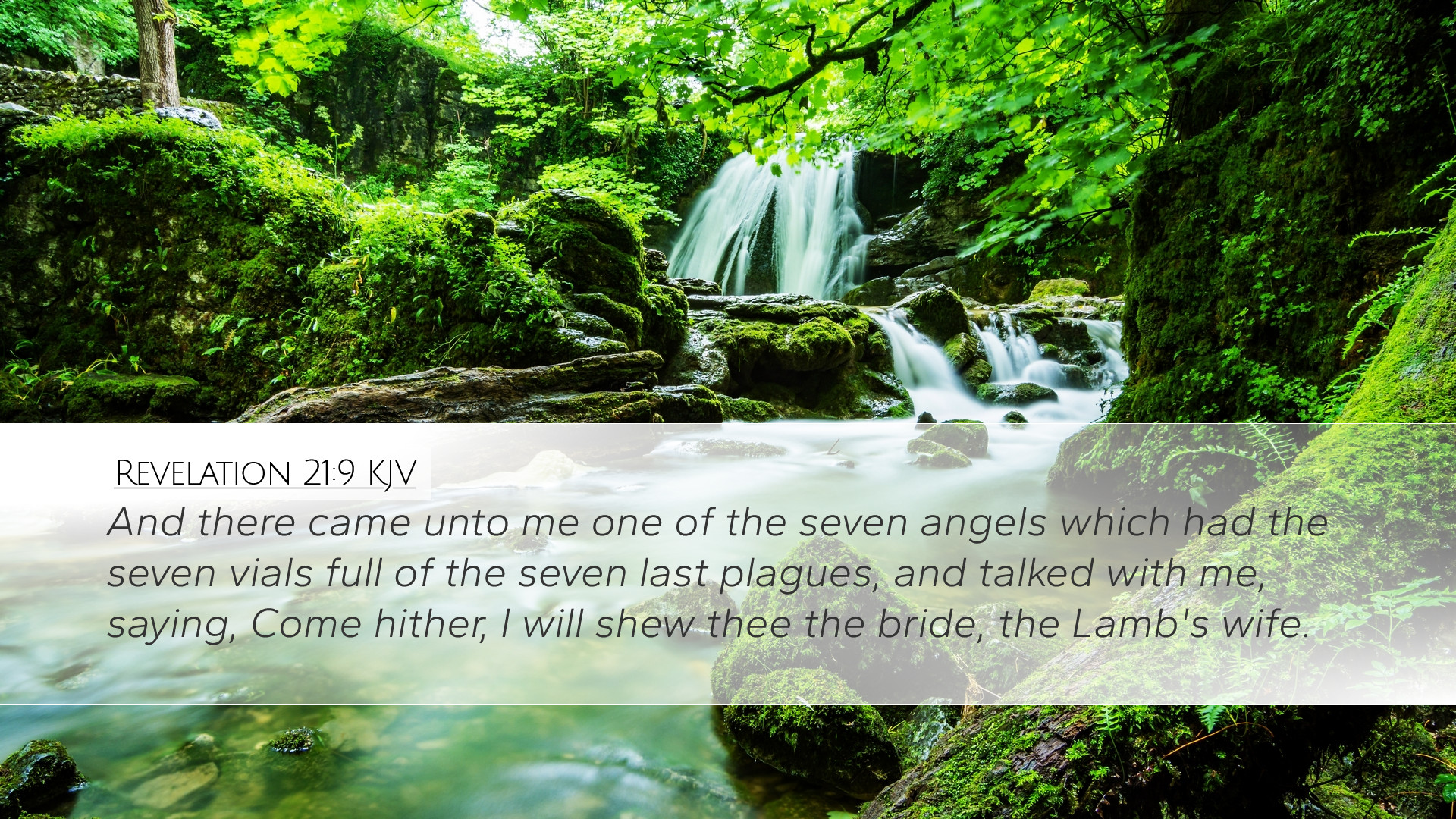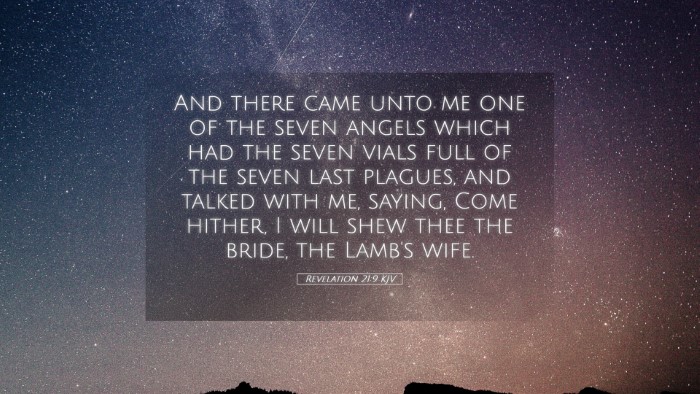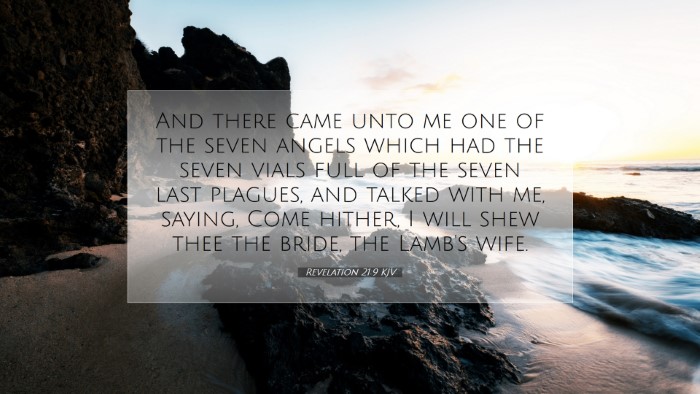Exegesis of Revelation 21:9
Verse Text: "Then came one of the seven angels who had the seven bowls full of the seven last plagues and spoke to me, saying, 'Come, I will show you the Bride, the wife of the Lamb.'
Contextual Background
The Book of Revelation, authored by John during his exile on the island of Patmos, serves as a prophetic vision addressing the triumph of God over evil and the establishment of His eternal kingdom. Revelation 21 marks the culmination of this vision, where the New Heaven and New Earth are described, ushering in the eternal state of God’s people. This particular verse sets the stage for a significant revelation—the unveiling of the divine community symbolized by the 'Bride' of Christ.
Commentary Analysis
Matthew Henry’s Perspective
Matthew Henry emphasizes the intimate relationship between Christ and His church, likening the church to a bride prepared for her husband. He points out the great dignity conferred upon the church by referring to it as the "Bride." This term illustrates the church's purity and glory as it is adorned for the final union with Christ. Henry explains that the angel’s invitation to John is not merely to view, but to understand the nature and purpose of this relationship, accentuating the joy and significance of being part of the Bride. The wedding imagery reflects the fulfillment of God’s covenant promise to His people.
Albert Barnes’ Commentary
According to Albert Barnes, the angel's role in this passage is indicative of divine guidance towards understanding God’s ultimate plan. He notes that the “seven angels” who have poured out the plagues represent the finality of judgment, leading to the revelation of grace in the 'Bride.' Barnes also highlights that the term "Lamb" signifies Jesus Christ as the sacrificial offering, elevating the significance of the Church’s relationship with Him. By describing the Church in terms of a bride, Barnes insists on the idea of a special, set-apart entity that is cherished and made ready for divine union—a theme deeply rooted in biblical theology.
Adam Clarke’s Insights
Adam Clarke provides an exegetical view by delving into the symbolism of the 'Bride.' He connects this imagery to the Old Testament, where the relationship between God and Israel is similarly depicted. Clarke notes that the 'wife of the Lamb' symbolizes the culmination of God's redemptive work, portraying the Church as victorious over trials and tribulations. He also points out the significance of “coming” as an invitation into a new revelation—inviting believers to witness the ultimate fulfillment of God’s promise. Clarke underscores the importance of preparation; the Church is seen not only as a passive recipient but as an active participant in her preparation for this divine relationship.
Theological Implications
The portrayal of the Church as the Bride of Christ carries profound theological implications. It encapsulates themes of love, sacrifice, and ultimate redemption. The angel’s declaration signifies not only a revelation but an invitation to grasp the depth of God's love and the hope of eternal communion with Him.
Conclusion
Revelation 21:9 serves as a pivotal verse that bridges judgment and grace. As pastors, theologians, and Bible students reflect on this passage, they are reminded of the church’s cherished status and the eschatological hope awaiting those who follow Christ. It is a compelling picture of divine friendship, compelling each believer to prepare their hearts as the Bride, ready for the glorious union with the Lamb.
Key Lessons for Believers
- Understanding Identity: Embrace the identity of the Church as the Bride of Christ, recognizing the inherent dignity and value bestowed upon it.
- Preparation for Union: Take active steps toward spiritual preparation, embodying qualities that align with the holiness of Christ.
- Hope in Redemption: Cling to the hope that God’s promises culminate in eternal fellowship, encouraging perseverance in faith amidst trials.
- Active Relationship: Foster an active and personal relationship with Christ, understanding that He desires a deep connection with His followers.


